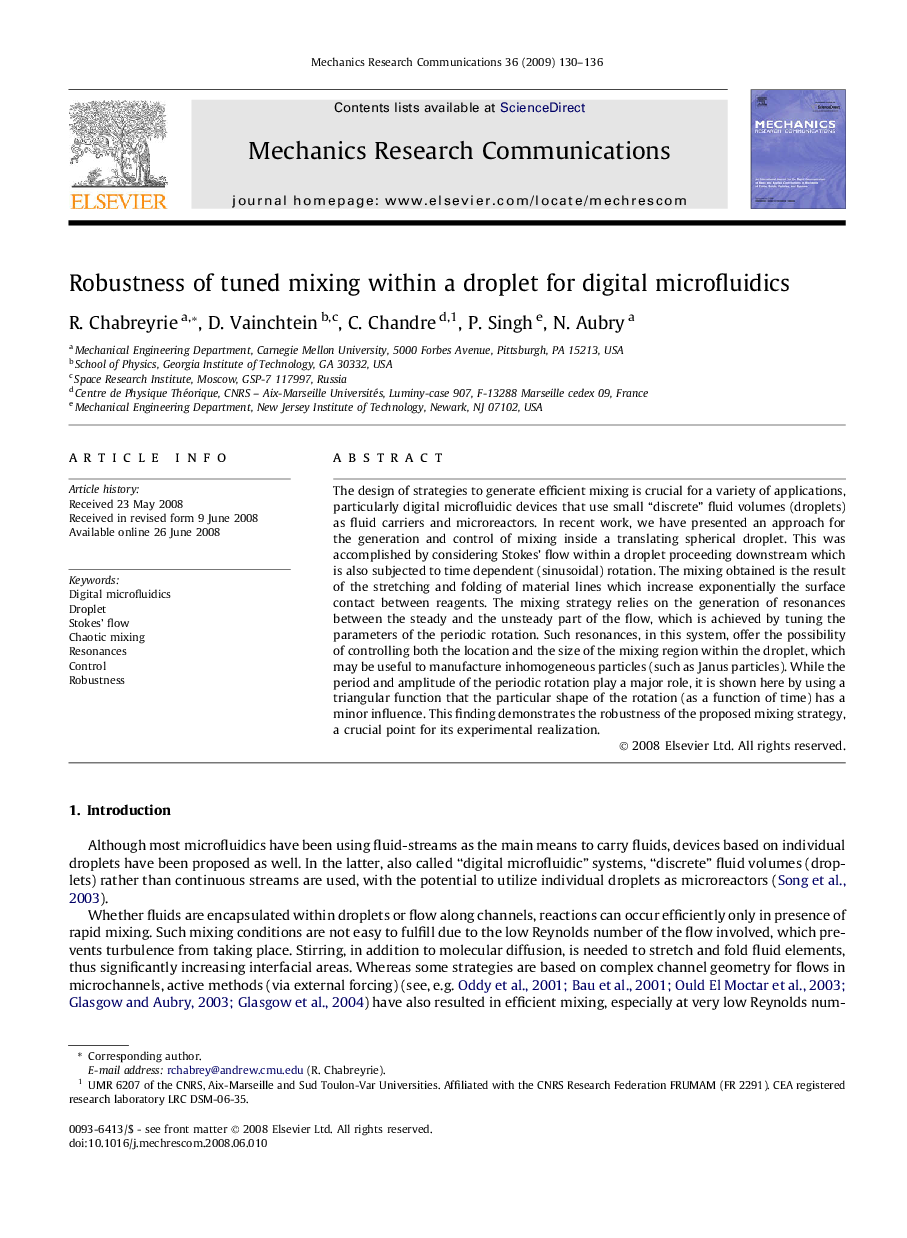| Article ID | Journal | Published Year | Pages | File Type |
|---|---|---|---|---|
| 801840 | Mechanics Research Communications | 2009 | 7 Pages |
The design of strategies to generate efficient mixing is crucial for a variety of applications, particularly digital microfluidic devices that use small “discrete” fluid volumes (droplets) as fluid carriers and microreactors. In recent work, we have presented an approach for the generation and control of mixing inside a translating spherical droplet. This was accomplished by considering Stokes’ flow within a droplet proceeding downstream which is also subjected to time dependent (sinusoidal) rotation. The mixing obtained is the result of the stretching and folding of material lines which increase exponentially the surface contact between reagents. The mixing strategy relies on the generation of resonances between the steady and the unsteady part of the flow, which is achieved by tuning the parameters of the periodic rotation. Such resonances, in this system, offer the possibility of controlling both the location and the size of the mixing region within the droplet, which may be useful to manufacture inhomogeneous particles (such as Janus particles). While the period and amplitude of the periodic rotation play a major role, it is shown here by using a triangular function that the particular shape of the rotation (as a function of time) has a minor influence. This finding demonstrates the robustness of the proposed mixing strategy, a crucial point for its experimental realization.
